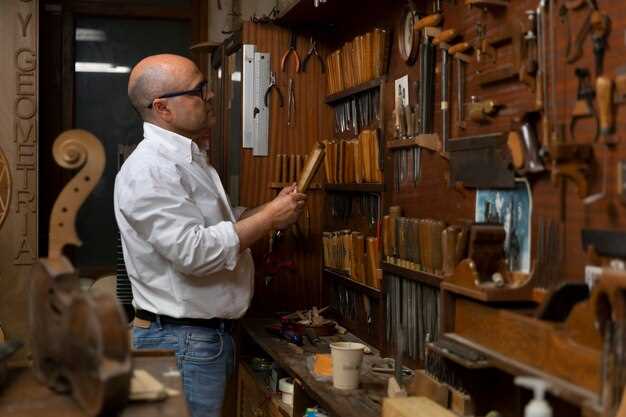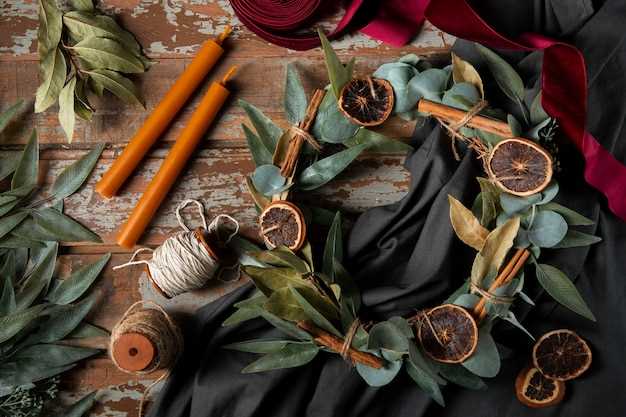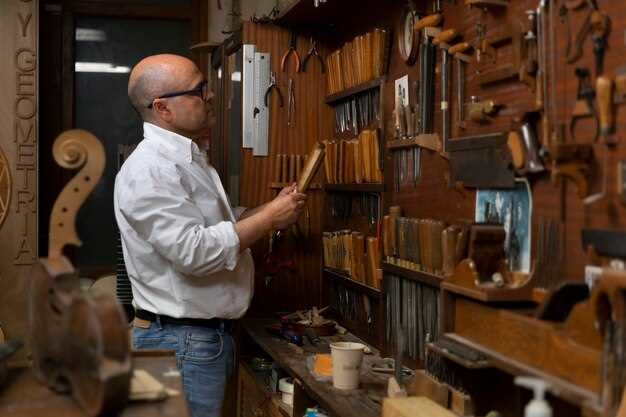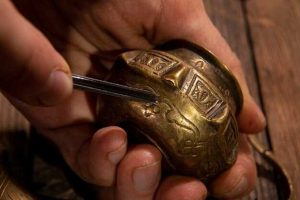
Embarking on a journey to discover and acquire unique and valuable items from the past is an exhilarating pursuit. Whether you are a seasoned collector or a novice enthusiast, the thrill of antique hunting is unparalleled. It is a captivating adventure that takes you on a quest to unravel the stories and secrets held within each vintage piece.
With a discerning eye and a passion for history, antique hunting allows you to delve into a world where time stands still. It is a chance to connect with the past, to touch and feel the remnants of bygone eras. From the delicate intricacies of antique jewelry to the sturdy craftsmanship of vintage furniture, every item holds a tale waiting to be discovered.
As you embark on your own journey of exploration, it is essential to arm yourself with knowledge and insider tips to navigate the vast landscape of estate sales and thrift stores. The art of thrifting and scouring estate sales requires a keen sense of observation, an understanding of value, and a willingness to dig deep. It is a skill that can be honed over time, allowing you to uncover hidden treasures that others may overlook.
Understanding the Thrifting and Estate Sale Scene
Exploring the world of thrifting and estate sales offers a fascinating glimpse into the realm of vintage treasures and hidden gems. This section aims to provide a comprehensive understanding of the vibrant and dynamic scene surrounding thrifting and estate sales, delving into the intricacies and nuances that make it such a captivating pursuit.
When immersing oneself in the thrifting and estate sale scene, it becomes apparent that it is far more than just a simple pastime or hobby. It is a subculture brimming with passionate individuals who possess a keen eye for unique and valuable items. These enthusiasts, often referred to as treasure hunters, are driven by the thrill of the hunt and the possibility of stumbling upon rare artifacts, collectibles, and antiques.
One of the key aspects of understanding the thrifting and estate sale scene is recognizing the diverse range of venues and settings in which these events take place. From bustling flea markets and antique shops to online platforms and curated estate sales, each offers its own distinct atmosphere and opportunities for discovery. Navigating these different avenues requires a combination of research, intuition, and a willingness to explore unfamiliar territories.
Another crucial element to grasp is the importance of developing a discerning eye when it comes to evaluating the authenticity and value of potential finds. Thrifting and estate sales can be a treasure trove of hidden gems, but they can also be a minefield of replicas and overpriced items. Learning to distinguish between genuine antiques and clever reproductions is a skill that comes with experience and knowledge of various historical periods, styles, and craftsmanship.
Furthermore, understanding the etiquette and unwritten rules of the thrifting and estate sale scene is essential for a successful and enjoyable experience. Respect for fellow enthusiasts, sellers, and the items themselves is paramount. It involves knowing when to negotiate, how to handle delicate pieces, and being mindful of the competitive nature of the community. Building connections and fostering relationships within the scene can also prove invaluable, as fellow enthusiasts often share tips, insights, and leads on upcoming sales or hidden gems.
In conclusion, delving into the world of thrifting and estate sales requires more than just a casual interest. It demands a deep understanding of the scene’s intricacies, a discerning eye for valuable items, and a respectful approach to the community. By immersing oneself in this vibrant subculture, one can embark on an exciting journey filled with unexpected discoveries and the thrill of unearthing timeless treasures.
Researching and Identifying Valuable Antiques
Exploring the world of antiquities requires a keen eye and a wealth of knowledge. In this section, we will delve into the art of researching and identifying valuable collectibles, uncovering the secrets that lie within the historical treasures waiting to be discovered.
Unveiling the Hidden Gems
When embarking on the journey of antique hunting, it is essential to develop a discerning eye for hidden gems. These hidden gems can be found in various forms, from exquisite furniture pieces to delicate porcelain figurines. By honing your ability to recognize the unique characteristics and craftsmanship of valuable antiques, you can uncover treasures that others may overlook.
Unlocking the Secrets of the Past
Research is the key to unlocking the secrets of the past and understanding the true value of antiques. By delving into historical records, examining markings and signatures, and consulting experts in the field, you can gain valuable insights into the origins, provenance, and significance of the items you encounter. This knowledge will empower you to make informed decisions and identify the true worth of the antiques you come across.
Decoding the Language of Antiques
Antiques possess a language of their own, with specific terminology and terminology that can be perplexing to the uninitiated. By familiarizing yourself with the vocabulary of antiques, such as terms used to describe different styles, materials, and periods, you can navigate the world of antiquities with confidence. This understanding will enable you to effectively communicate with experts, fellow collectors, and sellers, enhancing your ability to identify and acquire valuable pieces.
Separating the Genuine from the Reproductions
In the realm of antiques, reproductions and fakes can often masquerade as genuine articles. To avoid falling victim to deception, it is crucial to learn the telltale signs that distinguish authentic antiques from replicas. By examining the materials, construction techniques, and subtle nuances of design, you can separate the wheat from the chaff and ensure that you are investing in valuable, authentic pieces.
Continual Learning and Adaptation
The world of antiques is ever-evolving, with new discoveries and changing market trends. To stay ahead of the game, it is essential to embrace a mindset of continual learning and adaptation. By staying informed about current research, attending workshops and seminars, and networking with fellow enthusiasts, you can expand your knowledge and refine your ability to research and identify valuable antiques.
By immersing yourself in the art of researching and identifying valuable antiques, you will embark on a thrilling journey of discovery, unearthing hidden treasures and gaining a deeper appreciation for the rich history that lies within these remarkable artifacts.
Developing a Strategy for Successful Antique Hunting
Creating a well-thought-out plan is essential for achieving success in the world of antique hunting. By carefully strategizing your approach, you can maximize your chances of finding unique and valuable items while exploring various thrift stores and estate sales. In this section, we will explore some key strategies that can help you become a more successful antique hunter.
1. Researching and Identifying: Before embarking on your antique hunting journey, it is crucial to conduct thorough research and familiarize yourself with different types of antiques. This will enable you to identify valuable items more easily and avoid common pitfalls. Utilize online resources, books, and expert advice to expand your knowledge and develop a discerning eye.
2. Setting a Budget: Establishing a budget is vital to ensure that you don’t overspend or get carried away during your antique hunting expeditions. Determine how much you are willing to invest in each item and stick to your budget. This will help you make informed decisions and prevent impulse purchases that may not align with your overall goals.
3. Networking and Building Relationships: Building connections within the antique community can be immensely beneficial. Attend antique fairs, join online forums, and engage with fellow enthusiasts. By networking with experts and experienced collectors, you can gain valuable insights, learn about upcoming sales, and potentially access exclusive opportunities.
4. Planning Your Route: When visiting thrift stores and estate sales, it is essential to plan your route strategically. Research the locations, timings, and reputations of different venues to prioritize your visits. Consider starting early to have a better chance of finding hidden gems before others. Additionally, be open to exploring lesser-known places that may hold unexpected treasures.
5. Inspecting and Evaluating: Once you come across potential antique items, it is crucial to inspect and evaluate them carefully. Look for signs of authenticity, such as maker’s marks, signatures, or specific characteristics associated with a particular era or style. Examine the condition of the item and consider factors like rarity, demand, and market value to determine its worth.
6. Negotiating and Bargaining: Developing strong negotiation skills can significantly enhance your antique hunting experience. Be prepared to negotiate prices with sellers, but always do so respectfully and with knowledge of the item’s value. Polite and friendly communication can often lead to better deals and opportunities to acquire desirable pieces.
By incorporating these strategies into your antique hunting endeavors, you can increase your chances of success and make the most out of your thrifting and estate sale experiences. Remember to stay patient, persistent, and open-minded, as the world of antiques is full of surprises and hidden treasures waiting to be discovered.
Negotiating and Bargaining Techniques for Getting the Best Deals
When it comes to acquiring unique and valuable items, mastering the art of negotiation and bargaining is essential. By employing effective techniques, you can increase your chances of securing the best deals and adding remarkable pieces to your collection. In this section, we will explore various strategies and approaches that can help you navigate the world of antique hunting and estate sales with confidence.
1. Research and Preparation:
- Thoroughly research the item you are interested in to understand its value and rarity.
- Identify alternative options and comparable items to have a strong bargaining position.
- Prepare a budget and determine your maximum offer to avoid overspending.
2. Building Rapport:
- Establish a friendly and respectful relationship with the seller or estate sale organizer.
- Show genuine interest in the item and ask questions to demonstrate your knowledge.
- Compliment the quality and uniqueness of the piece to create a positive atmosphere.
3. Timing and Patience:
- Visit estate sales early to have a wider selection and more room for negotiation.
- Be patient and observe the dynamics of the sale to identify potential opportunities.
- Consider returning towards the end of the sale when sellers may be more willing to negotiate lower prices.
4. Negotiation Techniques:
- Start with a lower offer than your maximum budget to leave room for counteroffers.
- Use the “flinch” technique by reacting with surprise or disappointment to the initial price.
- Offer to pay in cash, which can sometimes lead to additional discounts.
- Bundle multiple items together to negotiate a better overall price.
- Be willing to walk away if the seller is not willing to meet your desired price.
5. Polite and Respectful Communication:
- Remain polite and respectful throughout the negotiation process, even if you encounter resistance.
- Listen actively to the seller’s perspective and try to find common ground.
- Express your appreciation for their time and consideration, regardless of the outcome.
By employing these negotiating and bargaining techniques, you can enhance your chances of securing the best deals while engaging in antique hunting and exploring estate sales. Remember, practice makes perfect, so don’t be discouraged if you don’t succeed immediately. With time and experience, you will become a skilled negotiator and uncover hidden treasures at remarkable prices.
Caring for and Preserving Your Vintage Discoveries
When it comes to your cherished vintage finds, ensuring their longevity and preserving their beauty is of utmost importance. In this section, we will explore essential tips and techniques for caring for and maintaining your unique treasures, allowing them to continue telling their stories for generations to come.
1. Cleaning and Dusting
Regular cleaning and dusting are crucial for maintaining the pristine condition of your vintage items. However, it is essential to approach this task with caution, as improper cleaning methods can cause irreversible damage. Utilize soft, lint-free cloths and gentle cleaning solutions specifically designed for delicate materials. Take extra care when cleaning intricate details or fragile surfaces, ensuring you do not apply excessive pressure or moisture.
2. Storage and Display
Proper storage and display techniques are vital for preserving the integrity of your antique finds. Consider factors such as temperature, humidity, and exposure to sunlight when selecting an appropriate storage location. Utilize acid-free tissue paper, archival boxes, or display cases to protect delicate items from dust, light, and potential damage. Additionally, avoid overcrowding your display areas to prevent accidental bumps or collisions.
By following these guidelines, you can ensure that your vintage treasures remain in excellent condition, allowing you to enjoy their beauty and historical significance for years to come.
Connecting with the Antique Hunting Community for Resources and Support

Engaging with like-minded individuals who share a passion for discovering and collecting unique treasures from the past can greatly enhance your antique hunting experience. By connecting with the antique hunting community, you gain access to a wealth of resources, knowledge, and support that can help you navigate the world of thrifting and estate sales.
Building a Network of Fellow Enthusiasts
One of the first steps in connecting with the antique hunting community is to build a network of fellow enthusiasts. This can be done through attending antique fairs, joining online forums and social media groups, or even participating in local antique clubs or associations. By engaging with others who share your interest, you can exchange valuable insights, tips, and recommendations for finding the best antique hunting spots and uncovering hidden gems.
Learning from Experienced Collectors
Within the antique hunting community, there are often experienced collectors who have a wealth of knowledge and expertise to share. These individuals can serve as mentors and guides, offering advice on everything from identifying authentic pieces to negotiating prices. By learning from their experiences, you can avoid common pitfalls and accelerate your own growth as an antique hunter.
Embracing Collaboration and Collaboration
Collaboration is a key aspect of the antique hunting community. By collaborating with others, you can pool resources, share leads on potential finds, and even organize group trips to estate sales or flea markets. This not only increases your chances of stumbling upon valuable items but also fosters a sense of camaraderie and support within the community.
Remember, the antique hunting community is a diverse and vibrant group of individuals who are passionate about preserving history through the collection of unique artifacts. By connecting with this community, you can tap into a vast network of resources, gain valuable insights, and forge lasting friendships with fellow antique enthusiasts.

